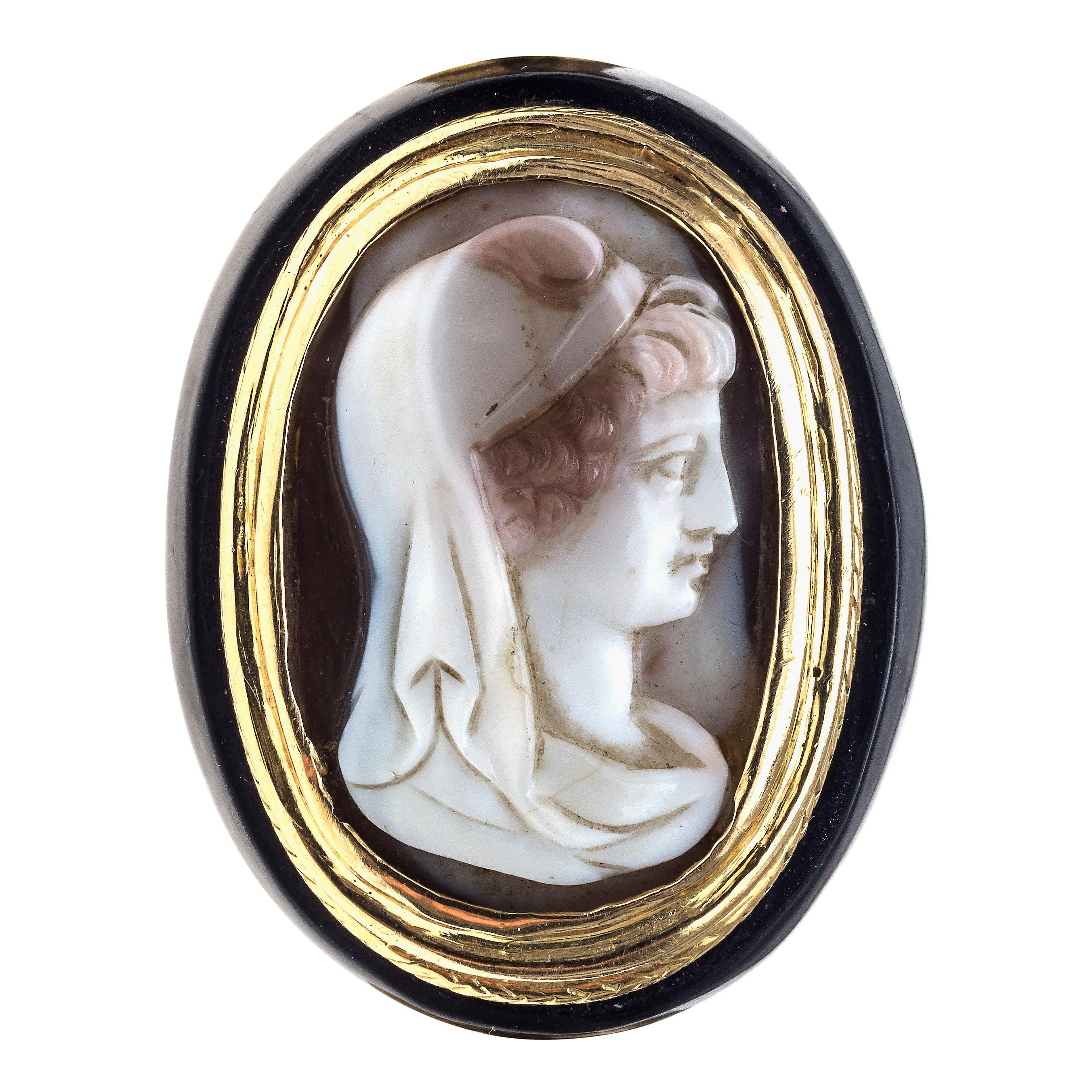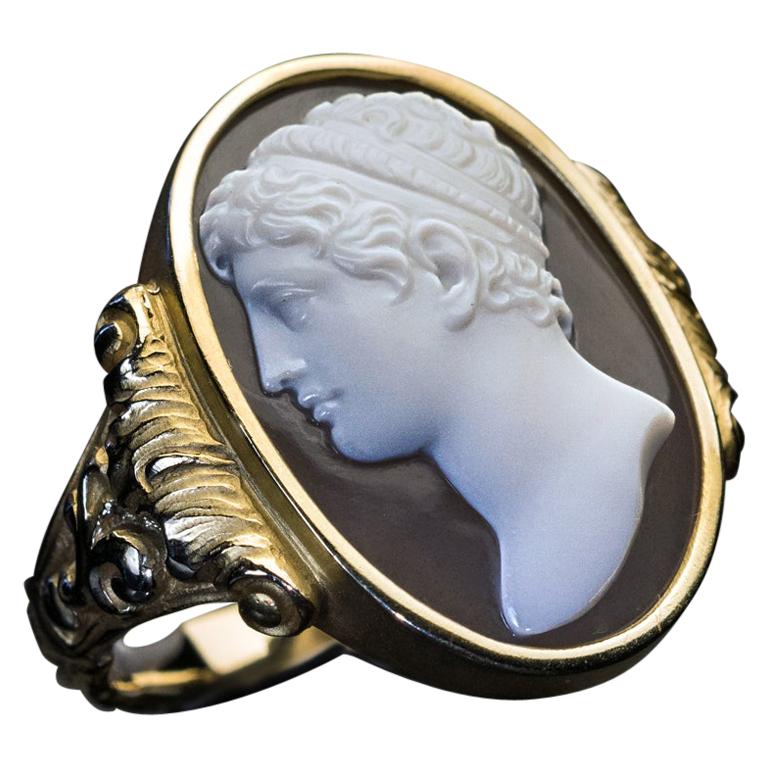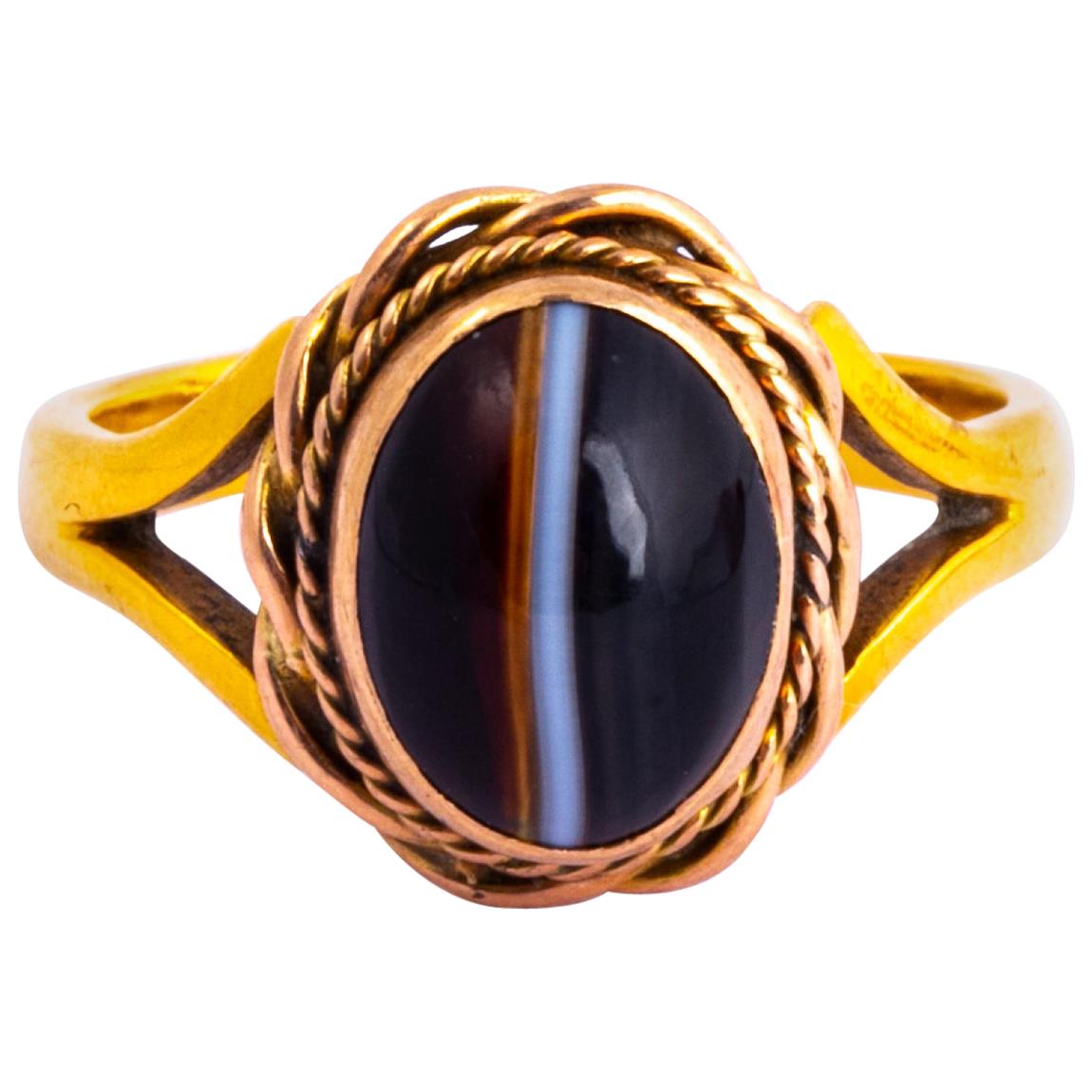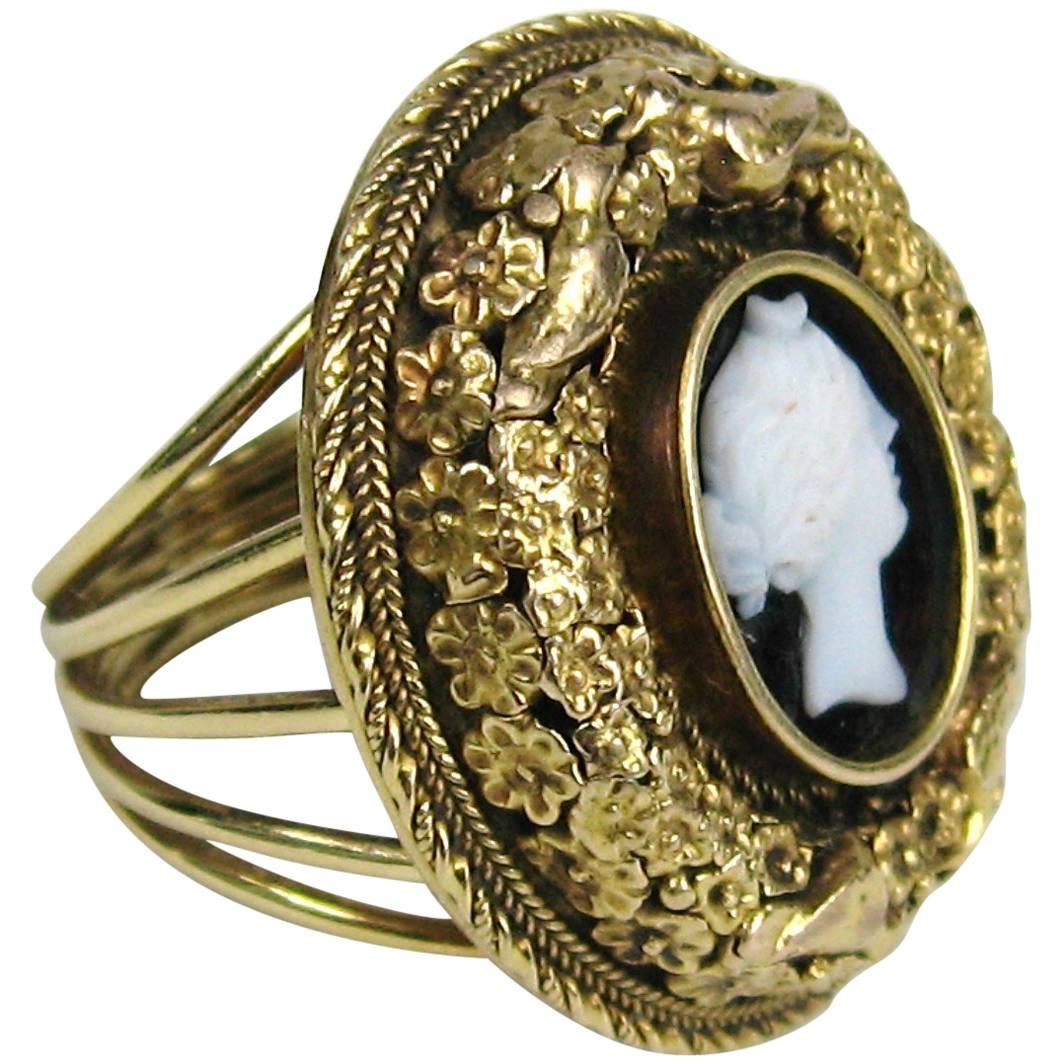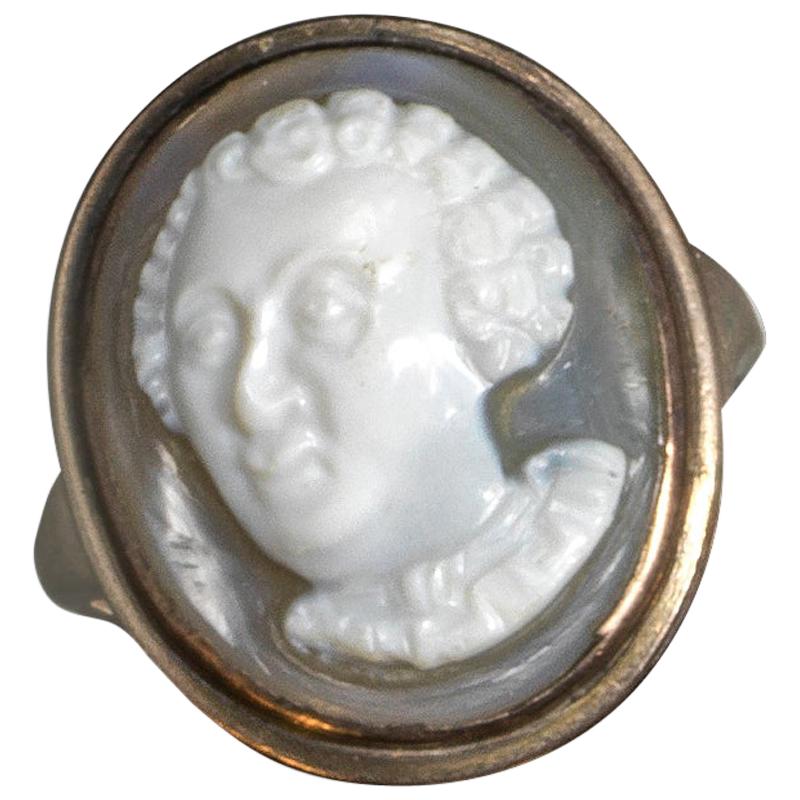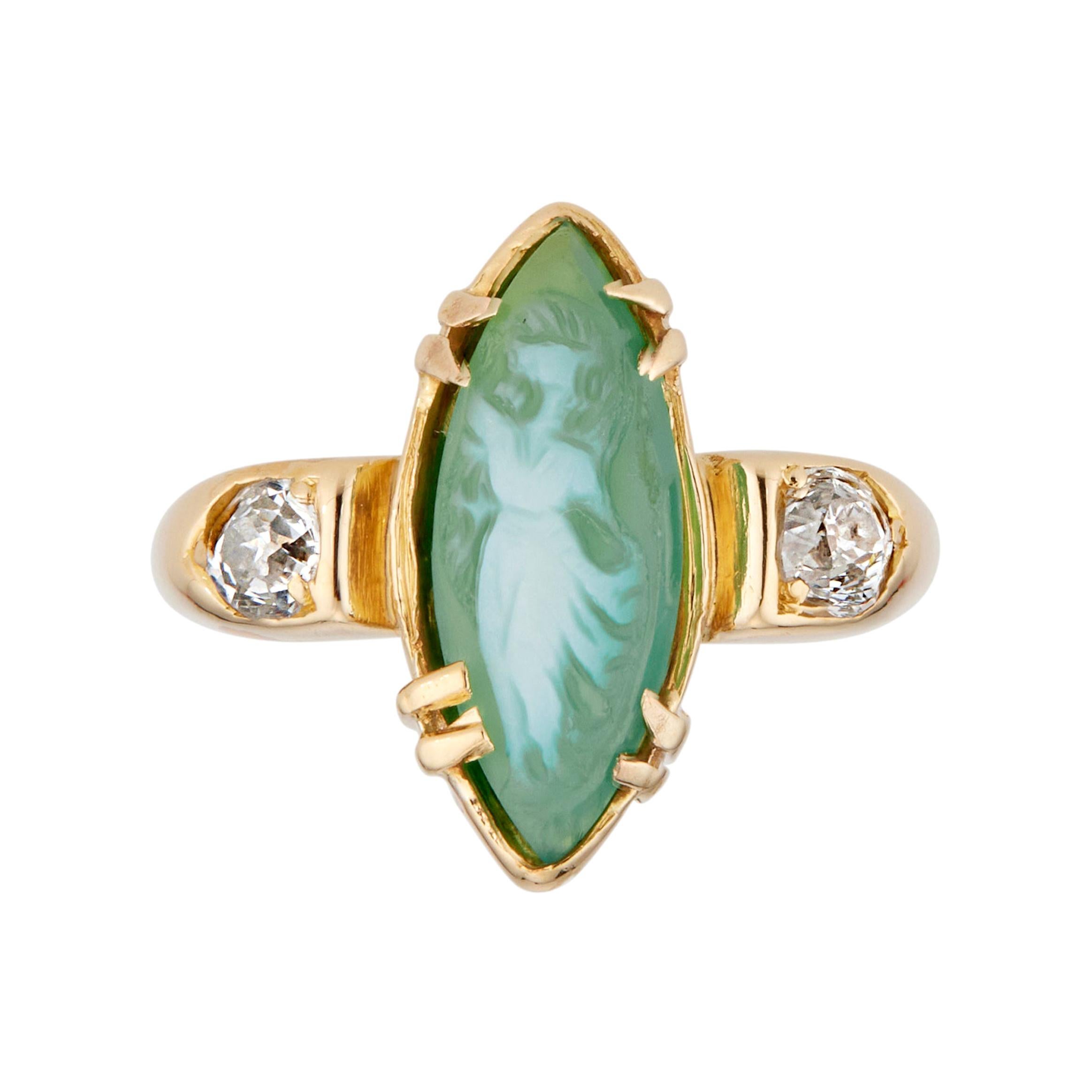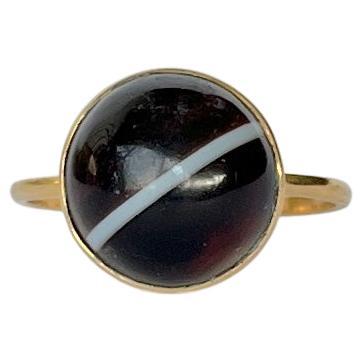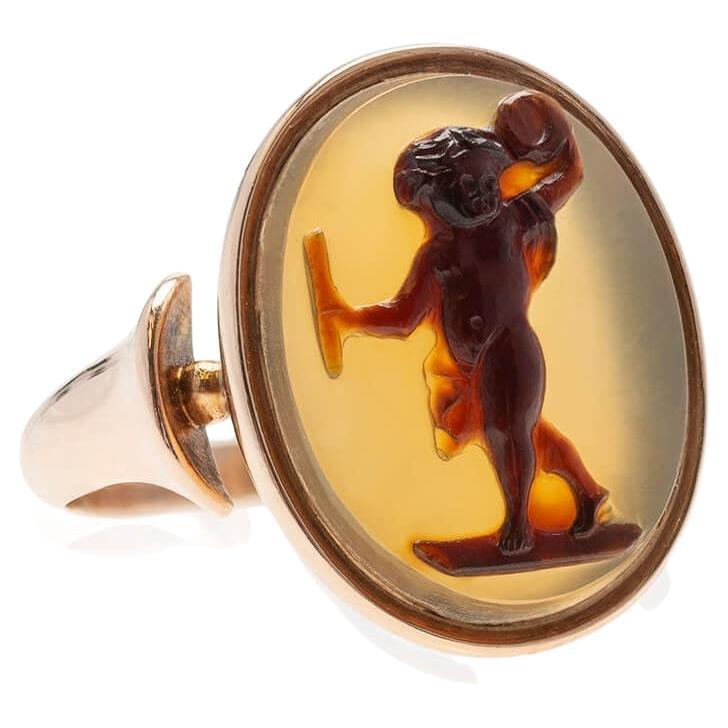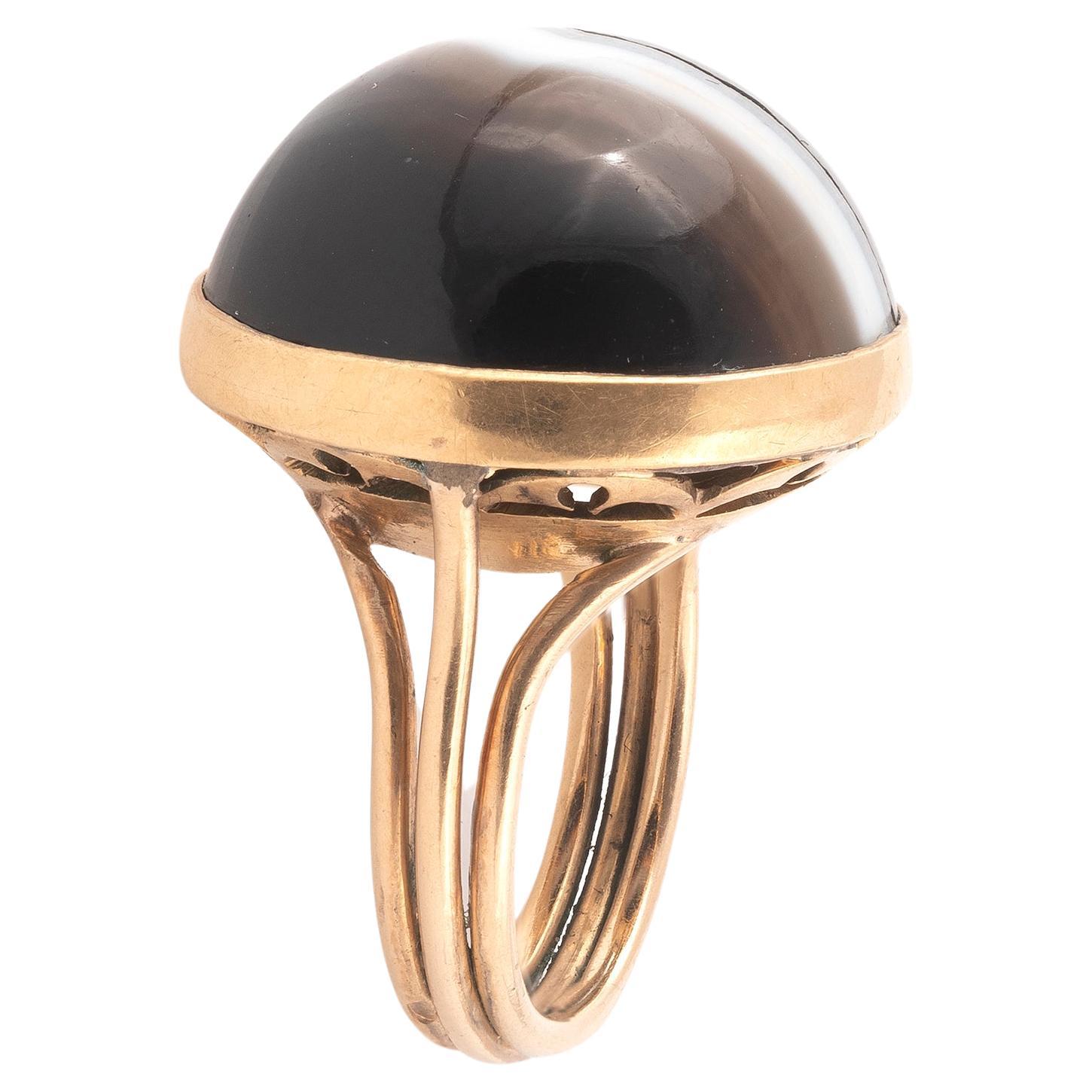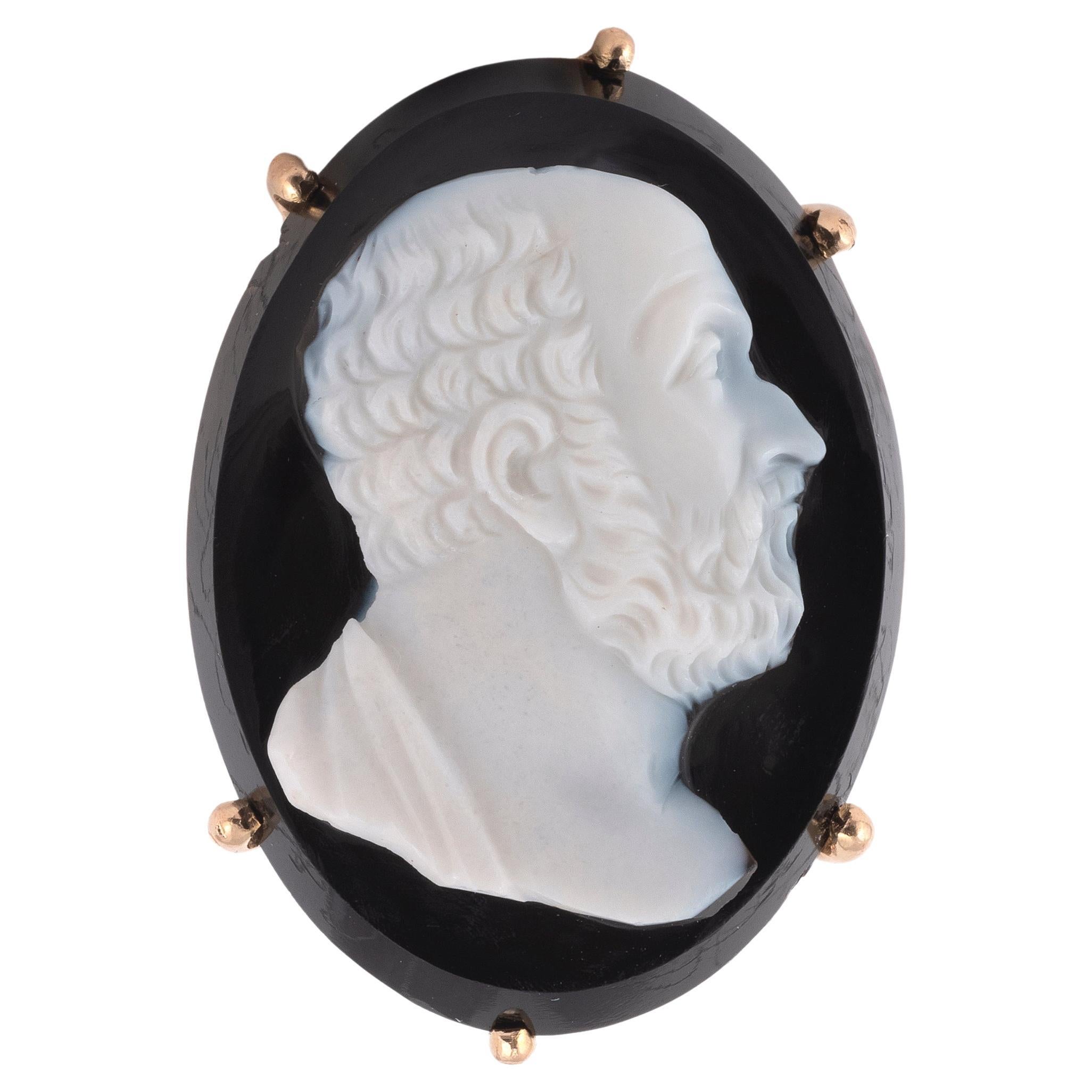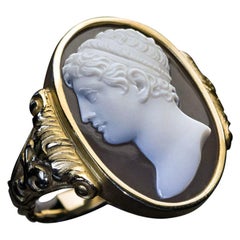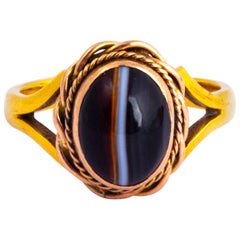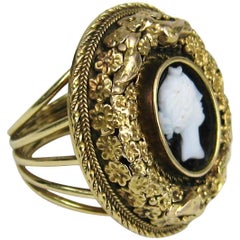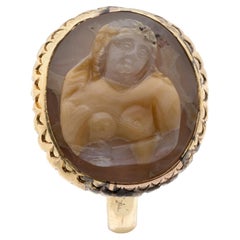
Antique Gold and Agate Renaissance Cameo Ring
View Similar Items
Video Loading
1 of 6
Antique Gold and Agate Renaissance Cameo Ring
About the Item
- Ring Size:8.75 US, Not Resizable
- Metal:
- Stone:
- Stone Cut:
- Weight:6.3 g
- Style:
- Place of Origin:
- Period:Late 17th Century
- Date of Manufacture:Cameo: second half of the sixteenth century; Ring: 18th century
- Condition:Wear consistent with age and use.
- Seller Location:Chicago, IL
- Reference Number:Seller: R-6021stDibs: LU2334213558162
Authenticity Guarantee
In the unlikely event there’s an issue with an item’s authenticity, contact us within 1 year for a full refund. DetailsMoney-Back Guarantee
If your item is not as described, is damaged in transit, or does not arrive, contact us within 7 days for a full refund. Details24-Hour Cancellation
You have a 24-hour grace period in which to reconsider your purchase, with no questions asked.Vetted Professional Sellers
Our world-class sellers must adhere to strict standards for service and quality, maintaining the integrity of our listings.Price-Match Guarantee
If you find that a seller listed the same item for a lower price elsewhere, we’ll match it.Trusted Global Delivery
Our best-in-class carrier network provides specialized shipping options worldwide, including custom delivery.You May Also Like
Antique Goddess Cameo Agate Gold Gentleman Horn Ring
Located in Munich, Bavaria
An oval cameo carved out of sardonyx depicts an antique mythological female bust in profile. The cameo has been executed in the 1st half of the 18th century and mounted in 18K gold. ...
Category
Antique Early 18th Century French More Rings
Materials
Agate, 18k Gold
Renaissance Revival Unisex Gold Ring with Antique Sardonyx Cameo
Located in Chicago, IL
Circa 1880
This ornate 19th century Renaissance Revival 14K gold unisex ring features an intricately carved sardonyx cameo of a classical Greco...
Category
Antique Late 19th Century Victorian More Rings
Antique Banded Agate and 9 Carat Gold Ring
Located in Chipping Campden, GB
This banded Agate is so glossy and beautiful! This stone is set in 9 carat gold with rope twist detail which goes perfectly with the Agate.
Ring Size: O 1/2 or 7 1/2
Stone Dimension...
Category
Vintage 1960s British Modern More Rings
Materials
Agate, 9k Gold, Gold
14 Karat gold Victorian Carved Agate Cameo Ring 1800s
Located in Wallkill, NY
Stunning floral and birds make up the surround on this 14K gold ring. Center is a Victorian woman. Victorian later soldered onto a modern shank. The ring is large in scale measuring ...
Category
Antique 1850s Unknown Early Victorian Dome Rings
Materials
Agate, 14k Gold, Yellow Gold
Late Renaissance Agate Cameo Ring Alessandro de' Medici
Located in Firenze, IT
Cameo depicting Alessandro de' Medici, known as (IL Moro or 'The Moor'), c. 16th
century, in later gold ring mount, cameo 2.0cm high, ring size 7
Alessandro de’ Medici (22 July 151...
Category
Antique 16th Century Italian Renaissance Signet Rings
Materials
Agate, Gold
Green Agate Diamond Diamond Yellow Gold Cameo Three-Stone Ring
Located in Stamford, CT
Estate 1920's green agate and diamond ring. Green female form cameo marquise agate center stone with 2 old European cut side diamonds in a 18k yellow gold setting.
1 marquise shape greenish white agate cameo...
Category
Early 20th Century Three-Stone Rings
Materials
Agate, Diamond, Gold, 18k Gold, Yellow Gold
Recently Viewed
View AllMore Ways To Browse
Intaglio Ring Stone
Louis 17 Jewel
Louis 15 Cabinet
Gold Cameo Left
Drapery Ties
Female Torso Bust
Hardstone Intaglio
Automaton Watches
Baignoire Vintage
Baume And Mercier Geneve Gold Watch
Baume Et Mercier Gold
Baume Mercier Gold Watches Women
Berge Jewelry
Bernstein Jewelry
Beverly Hills Elegance Jewelry
Bezel Miligrain Necklace Diamond
Big Bang Rose Gold Hublot
Bill Clip Silver
